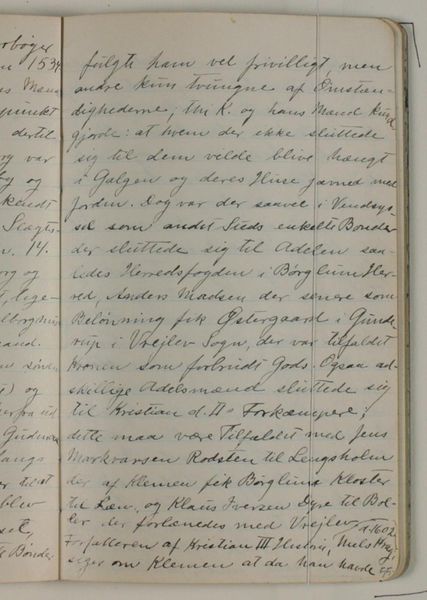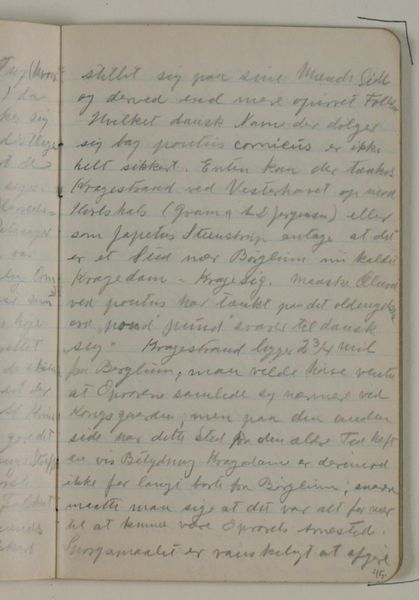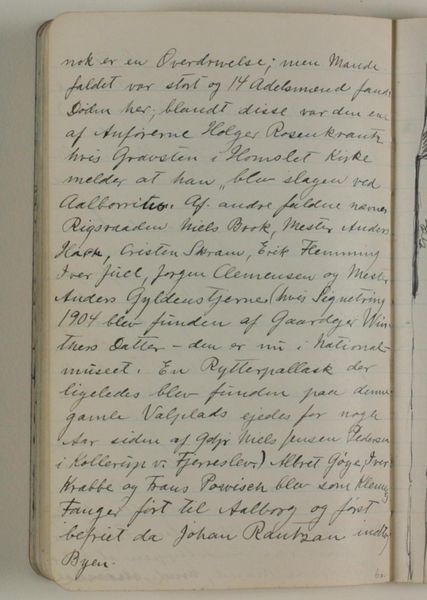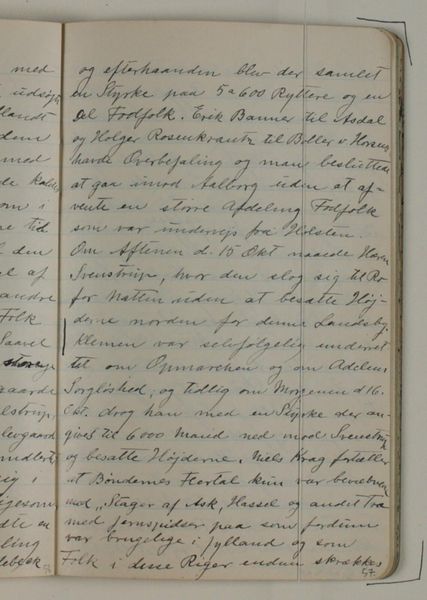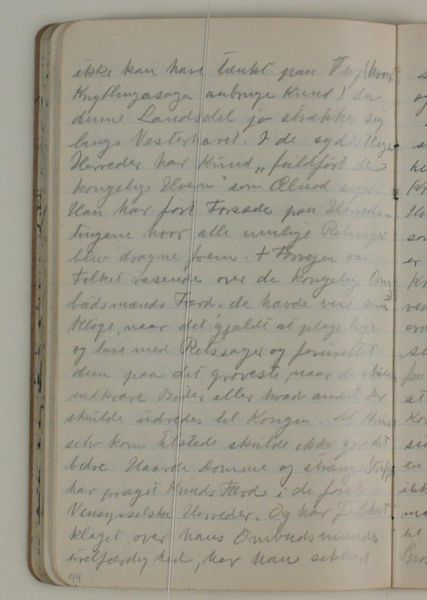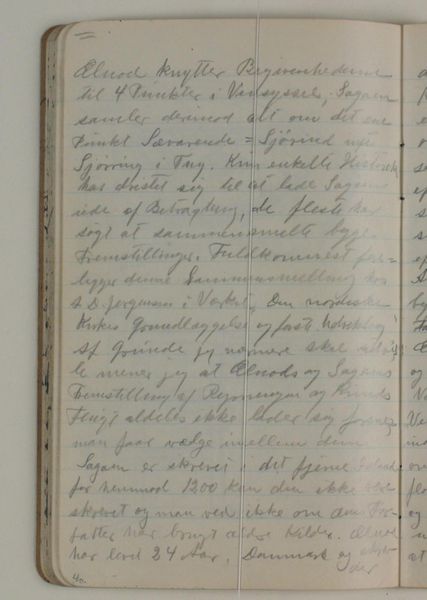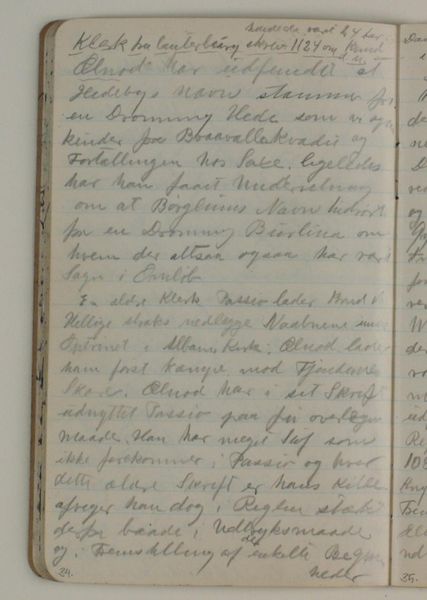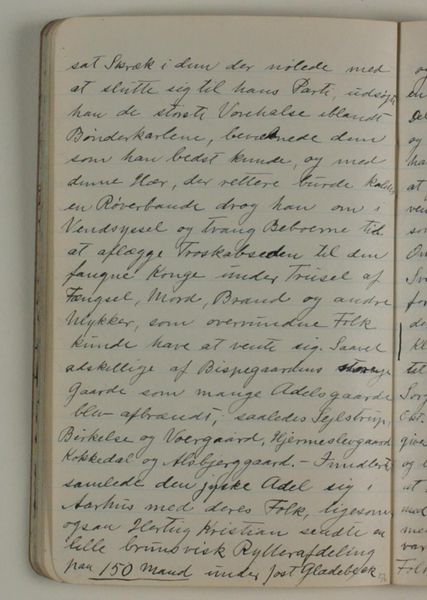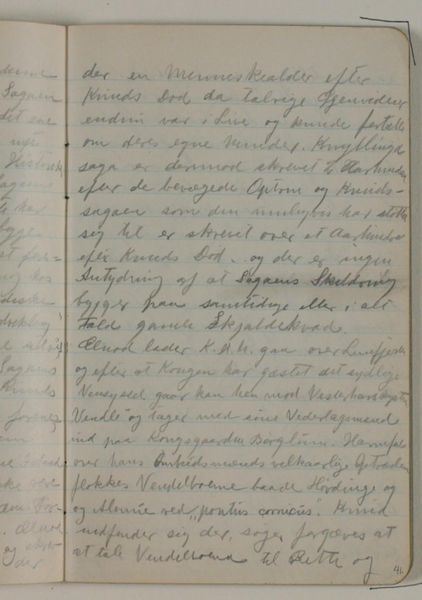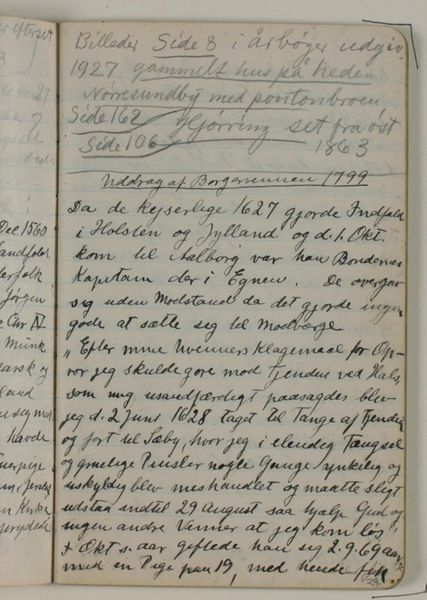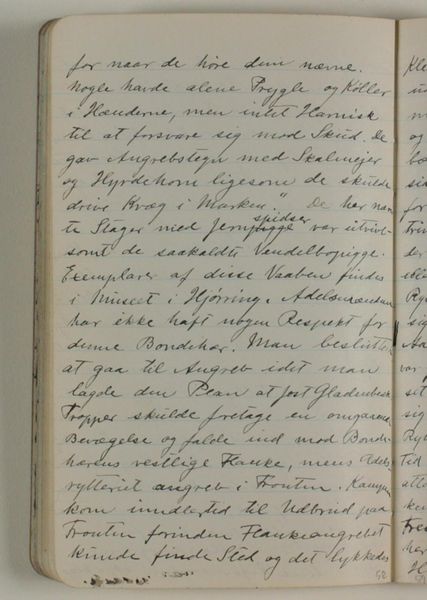
Notater vedrørende Peder Dyrskjøt. beretning om faderens død uddrag af "Borgervennen" 1799 1933 - 1934
0:00
0:00
drawing, paper, ink
#
drawing
#
medieval
#
paper
#
personal sketchbook
#
ink
#
sketchbook drawing
#
calligraphy
Dimensions: 175 mm (height) x 109 mm (width) (monteringsmaal), 175 mm (height) x 109 mm (width) (bladmaal)
Curator: Here we have a sketchbook page, entitled "Notater vedrørende Peder Dyrskjøt. beretning om faderens død uddrag af 'Borgervennen' 1799," created between 1933 and 1934 by Niels Larsen Stevns. It's currently held at the SMK, the National Gallery of Denmark. What strikes you initially? Editor: The density of the script. It feels…intimate, almost like overhearing a private thought. The calligraphy is beautiful, yet packed so tightly, suggesting urgency. Curator: That sense of intimacy resonates. Stevns made use of ink on paper here, producing a piece rich in calligraphic detail. He seems to be directly engaging with the text from "Borgervennen," weaving his own artistic impressions into it. It suggests a deep cultural conversation across time. Editor: It’s interesting to think about the act of transcription itself as a political or cultural statement. Why copy this specific text? What did "Borgervennen" and the story of Peder Dyrskjøt represent to Stevns during the interwar years? Curator: Perhaps a revisiting of national identity in a time of flux? "Borgervennen," as a source from 1799, might hold particular resonance given its connections to ideas of civic virtue and national narrative in a period undergoing significant societal change. Also, this return to Medieval visual references in Stevns practice might be indicative of the period. Editor: It really pushes us to ask questions about the role of historical narratives and how they are used and reshaped. A sketchbook entry—something inherently personal—becomes a space for engaging with broader societal themes. The act of writing it is powerful. Curator: Absolutely. It allows us to consider the individual's connection to larger historical and cultural currents. And perhaps Stevns is hinting at how memory is constructed and re-constructed, fragmented, and layered like the script on this very page. Editor: It does invite speculation about Stevns’ own psychological relationship with his artistic ancestry and how he fits himself within that ongoing story. Thank you, that really does illuminate the multiple layers at work. Curator: My pleasure; examining Stevns' personal engagement with such historically laden material provides much food for thought.
Comments
No comments
Be the first to comment and join the conversation on the ultimate creative platform.
